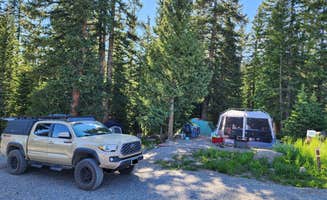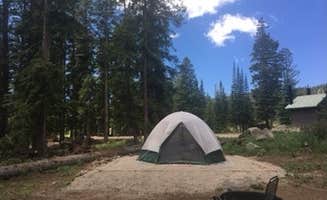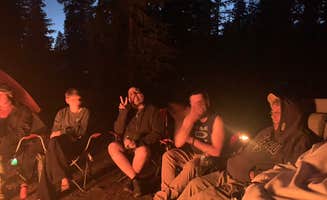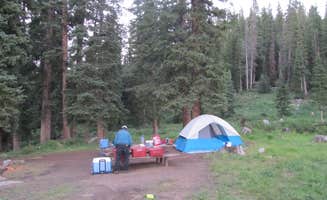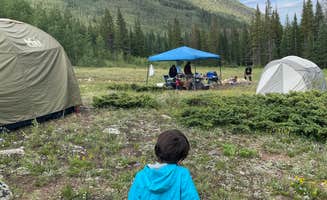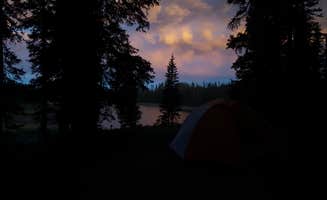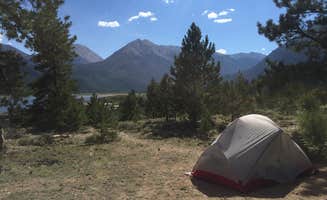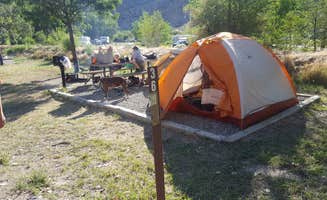The Grand Mesa National Forest near Mesa Lakes, Colorado sits at elevations exceeding 10,000 feet, creating a distinct alpine climate with brief summers and extensive winter seasons. This high-altitude camping area features over 300 lakes scattered across the mesa landscape, with seasonal access typically limited from late June through September. Most campgrounds at these elevations experience dramatic temperature swings between day and night.
What to do
Fishing at Twin Lake: The still, remote waters provide excellent fishing opportunities throughout summer months. "Amazing views, light rain, and still my favorite forest," notes a Twin Lake visitor, where the isolated setting creates a peaceful experience even during peak season. Access requires high-clearance vehicles on the approach road.
Hiking from Cobbett Lake: Several trail networks connect the Grand Mesa lakes system, allowing hikers to explore multiple bodies of water in a single outing. "There are great hiking trails from lake to lake in the area," mentions a Cobbett Lake camper, highlighting the interconnected nature of the mesa's trail system that extends beyond single campgrounds.
Paddling at Island Lake: The lake offers excellent calm-water paddling access for non-motorized watercraft. "We were able to just strap two paddle boards and a kayak to the roof of the truck and go back and forth," reports a visitor, noting the campground provides free parking at the day-use area with a camping permit, simplifying equipment transport for water activities.
What campers like
Terrain variety: The upper Grand Mesa camping areas feature a mix of open meadows and dense forest settings. "We loved being surrounded by tall trees on one side and having a long distance view across the meadow on the other side, watching storm clouds approaching every day," explains a camper at the Grand Mesa FS 105 Dispersed Camping area.
Wildlife encounters: Many campers report close wildlife experiences beyond typical sightings. "One morning we looked outside to see several cows munching on the remains of our campfire," notes a dispersed camping visitor. "Apparently they like to eat ashes and charcoal for the minerals because it happened twice!"
Tent site design: Many established campgrounds feature specially constructed tent pads. "The site had a pull in long enough for a vehicle and small camper, along with a pad for the fire pit/picnic table and a pad for the tent," describes a visitor to Island Lake Campground, appreciating the intentional layout of camping spaces.
What you should know
Road access challenges: Many dispersed and established campgrounds require navigating rough forest service roads. "The road was very rough but doable by moving along very slowly," explains a camper, emphasizing the need for patience when accessing more remote sites. High-clearance vehicles are recommended for many areas.
Campground competition: First-come sites fill extremely quickly during peak season. "I cannot stress this enough, get there early if going on a weekend! We arrived at 2:30 and got one of the last spots," warns a visitor to Cottonwood Lake Campground. Weekday arrivals significantly improve site availability.
Construction impacts: Some campground infrastructure is undergoing improvements through 2026. "Be aware that the campground next to the lake, the day use area, and lower road are all closed through the 2026 season for construction," notes an Island Lake camper, explaining how this affects access to popular recreation areas.
Tips for camping with families
Reservoir-adjacent sites: Several family-friendly campgrounds offer direct water access. "The fishing lakes, swimming lake and playground are all fun aspects my family enjoys," mentions a visitor to James M. Robb Colorado River State Park, highlighting how multiple water features accommodate different activities.
Insect preparation: Mesa Lakes area experiences significant mosquito activity during summer months. "The mosquitos were like mini vampires," warns a Cobbett Lake visitor, emphasizing the need for comprehensive insect protection for comfortable family camping, particularly near water bodies.
Loop selection matters: Different campground loops offer varied experiences based on proximity to features and noise sources. "If I was to come back here I definitely would not stay in loop D maybe 100 yards from interstate on other side of fence/tree line," advises a James M. Robb visitor, noting how location within a campground significantly impacts the experience.
Tips from RVers
Site leveling requirements: Many campgrounds feature sloped sites requiring additional equipment. "The site was pretty level but we did use some levelling blocks to even things out," notes a visitor to Jumbo Campground, where even designated RV sites often require adjustment for comfort.
Approach road selection: Multiple access routes to campgrounds vary dramatically in difficulty. "Be sure to take the longer road along the south side of the lake from the eastern most turn off of HWY 65 to get to the campground. The norther western route is narrow, steep and very challenging for even the smallest RV," advises an Island Lake camper, highlighting the critical nature of proper route selection for larger vehicles.
Connectivity options: Cell coverage is minimal throughout the mesa, requiring alternative solutions for those needing connection. "We used a Starlink this year instead of messing around with cellular antennas," reports a camper, noting that traditional cell boosters provide limited improvement in this remote region where satellite options work better.




